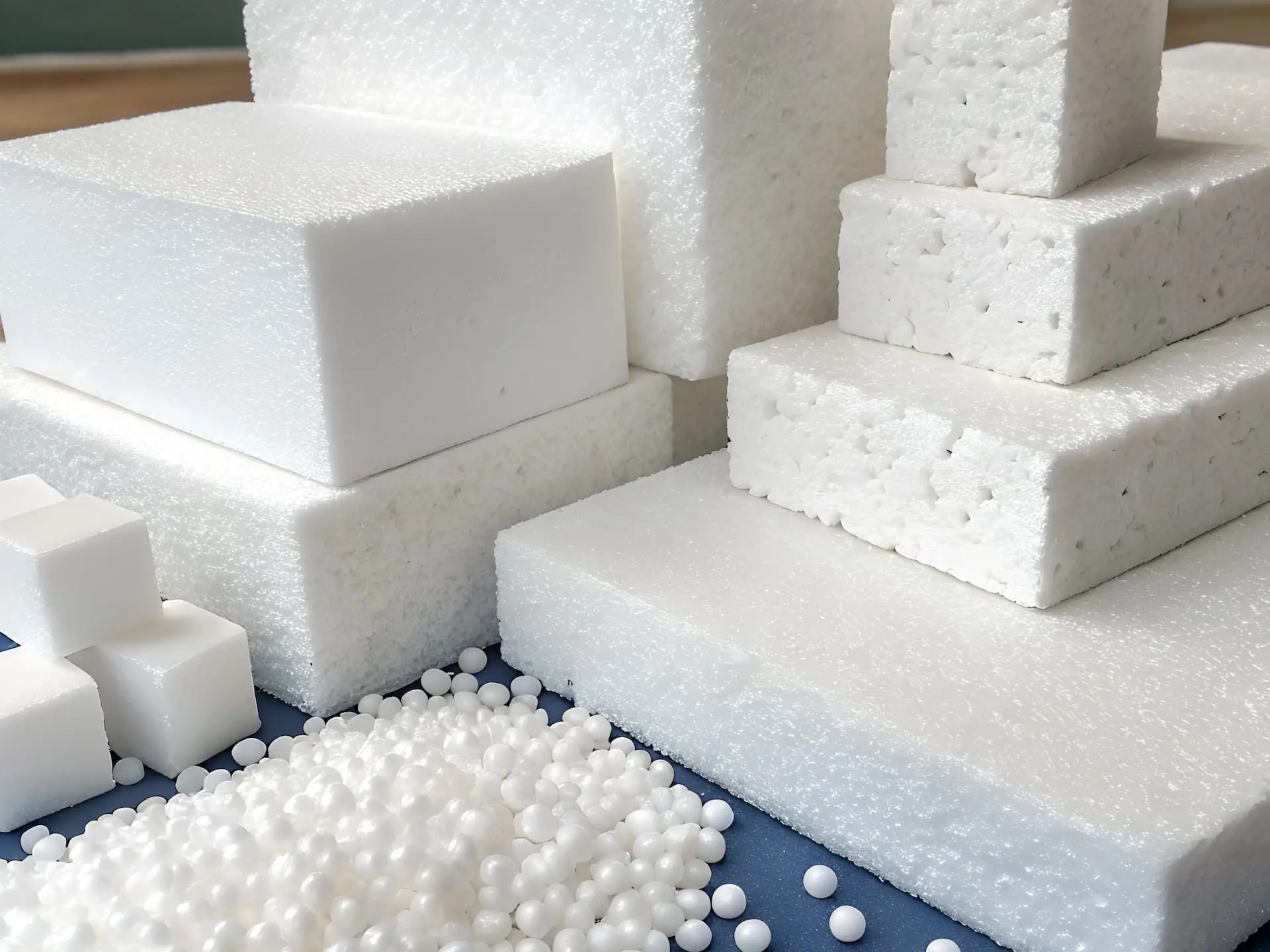Ja, schuim kan worden gerecycled, maar het proces en de haalbaarheid zijn afhankelijk van het type schuim:
- Geëxpandeerd polystyreen (EPS): EPS-schuim, dat vaak piepschuim wordt genoemd, is technisch gezien recyclebaar. Het is echter niet gemakkelijk te verwerken vanwege de lichte aard, waardoor het moeilijk is om het economisch te transporteren en recyclen. EPS kan worden gerecycled tot producten zoals synthetisch hout, kleerhangers en nieuwe schuimverpakkingen, maar daarvoor zijn vaak gespecialiseerde faciliteiten nodig. Veel regio's accepteren geen EPS in recyclingprogramma's aan huis vanwege deze uitdagingen. In plaats daarvan zijn er specifieke afleverlocaties of recyclingevenementen waar EPS naartoe kan worden gebracht.
- Polyethyleen (PE) schuim: Dit type is volledig recyclebaar. PE-schuim kan worden gesmolten en opnieuw worden gevormd voor vergelijkbare toepassingen, waardoor het een goede kandidaat is voor recycling. Het wordt vaak gebruikt in verpakkingen vanwege de dempende eigenschappen.
- Polyurethaan (PU) schuim: PU-schuim, gebruikt in verschillende vormen zoals meubelvulling of verpakking, kan worden gemalen en opnieuw worden verwerkt. Het kan worden omgezet in nieuwe schuimproducten, isolatiematerialen of andere panelen met een hoge dichtheid.
Het recyclen van schuim omvat verschillende stappen:
- Verzameling:Schuim moet worden ingezameld, vaak bij gespecialiseerde recyclingcentra of tijdens specifieke recyclingevenementen, omdat het normaal gesproken niet bij de reguliere recycling aan huis wordt geaccepteerd.
- CompressieOm het transport mogelijk te maken, wordt schuim vaak samengeperst of verdicht tot blokken, waardoor het volume aanzienlijk wordt verkleind.
- Herverwerking:Het samengeperste schuim kan vervolgens door smelten of malen worden herverwerkt tot pellets of nieuwe schuimproducten.
De impact van schuim, met name EPS, op het milieu is aanzienlijk vanwege de langzame afbraaksnelheid en het potentieel om schadelijke chemicaliën uit te logen. Daarom is recycling mogelijk, maar wordt het gebruik verminderen, hergebruiken van schuimproducten of het kiezen van alternatieve materialen vaak aangemoedigd als recycling niet haalbaar of kosteneffectief is. Controleer altijd lokale recyclingprogramma's voor specifieke richtlijnen, aangezien recyclingmogelijkheden per regio kunnen verschillen.



